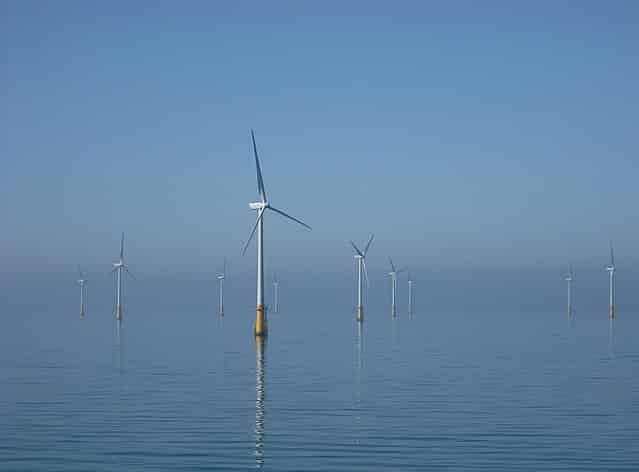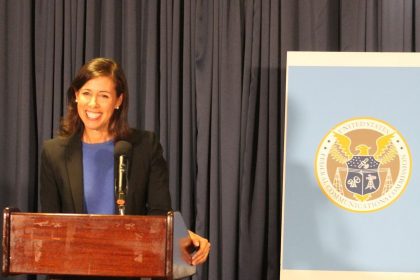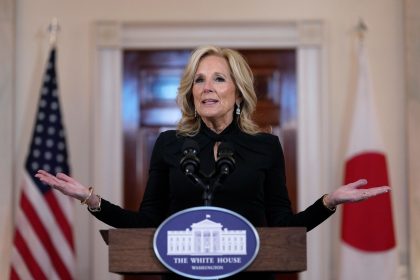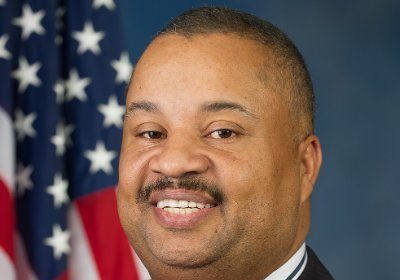Wind Generators Faces Support and Skeptics as Government Seeks Renewable Energy

WASHINGTON — The wind drove federal lawmakers Thursday to consider whether offshore turbines should become a major new source of electricity for American consumers.
As environmentalists tried to convince a congressional panel that wind energy is a cost-effective investment, detractors said hidden expenses mean it’s not worth the money.
“It’s a game changer for renewable energy,” said Rep. Mike Doyle, D-Pa., a member of the House Energy and Commerce subcommittee on energy.
President Joe Biden proposes generating 30 gigawatts of electricity from offshore wind generators by 2030, which would be nearly 700 times more than now.
However, the cost estimates and benefits are widely disputed, which prompted much of the debate during the congressional hearing Thursday.
“We need to look before we leap and we need to gather those facts,” said Rep. Fred Upton, R-Mich.
Rather than projecting years into the future about what wind generators might provide, the federal government should be dealing with more immediate energy problems, he said.
“We’re in an energy crisis right now,” Upton said as he discussed the upcoming winter.
Nationally, home heating oil prices are up 43 percent in the past year for an average of $1,700 per year per household, according to energy industry estimates. Nearly half of U.S. homes use natural gas for heat, which means an average of a 30 percent bigger bill than one year ago.
Environmentalists who testified to the subcommittee called arguments against wind energy short-sighted and dangerous in a world moving toward climate crisis caused by fossil fuels.
“The beauty of offshore wind is that wind is free,” said Heather Zichal, chief executive officer of the environmental group American Clean Power Association.
She addressed skeptics’ concerns about the high costs of manufacturing, installing and operating the generators by saying the costs are falling.
“The cost of wind [energy] has come down 71 percent since 2009,” Zichal said. Further reductions are likely with improving technology, she added.
The Biden plan for an estimated 2,000 wind generators would produce as many as 83,000 well-paying jobs and $25 billion in annual revenue, Zichal said.
However, the plan could only become practical with a long-term government commitment and certainty for the energy industry about regulatory requirements, she said.
Mark Menezes, a former U.S. Energy Department deputy secretary, warned against rushing into a massive wind energy development project.
Finding the best sites for the generators and installing the base equipment could be prohibitively expensive, he said. In addition, the electricity needs to be stored in batteries, which cannot yet store it long enough to be cost-effective, he said.
“The cost is going to be put on ratepayers,” Menezes said.
Several lawmakers asked about lessons that could be learned from European countries, such as the United Kingdom. It derives about a quarter of its electricity from offshore wind generators.
Their electrical grid has been plagued by unreliable generation and high prices for consumers in recent years.
Nevertheless, several states are positioning themselves for wind energy projects as the U.S. Interior Department asks about their interest. They include Massachusetts, New York and Oregon.
In addition, the technology is evolving quickly. In a recent development, Norwegian company Wind Catching Systems said it has developed a floating offshore wind power platform that looks like a wall of small generators instead of a single big one.
The floating Windcatcher stacks 126 small rotors on a 1,000-foot-high frame, which can produce electricity equivalent to 25 traditional wind turbines at about half the price, the company says on its website.
Tom can be reached at [email protected].
























